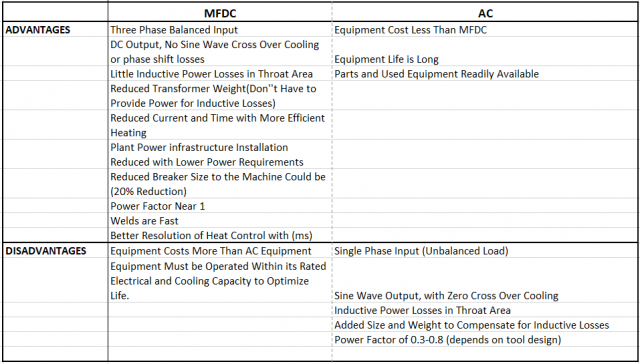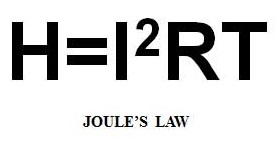
Spot Welding
Questions and Answers
Pressure, current and time (PCT) are the basic functions performed by the resistance welder. These functions are controlled or initiated by the weld controller. It initiates each step when told to start the weld process by input from the foot switch or automation PLC. The controller allows time for each step to operate and controls the current amplitude. In simplified form this is Squeeze, Weld and Hold. The squeeze sequence allows the pressure system to build up the force to contain the weld. The weld function is the actual current flow and is totally controlled by the weld controller. It regulates the amplitude and time of current flow. Hold is the period which allows the weld nugget to cool down and solidify under force. The controller regulates this time.
Why do so many projection welds continue to be made on AC machines when MFDC has so many advantages?
MFDC systems over the last twenty years have been the dominant new welding system. It has found usage in most new installations. That is not to say that AC systems do not have their place in the industry. They do and will continue to be used. Below is a comparison of the two systems pro & con:

An inquiry came in suggesting that two forces are responsible for creating a resistance weld. Let’s examine this question. To do so we will look at two previously published articles in this blog:
“WHAT IS AC RESISTANCE WELDING”
AND
“WHAT IS THE DEFINITION OF RESISTANCE WELDING”
Per the definition of the Resistance Welding Manufacturers Alliance:
RESISTANCE WELDING IS THE JOINING OF METALS BY APPLYING
PRESSURE
AND PASSING
CURRENT
FOR A LENGTH OF
TIME
THROUGH THE METAL AREA WHICH IS TO BE JOINED
When a machine has been running good parts and a brief stop is made one expects to start back up and make good parts. The stop could be for a break, electrode change, electrode dressing, lunch or shift change. These occur every day and should not create a problem. If something is occurring what is the variable?
Some have said that the electrode cools off during the break. Possibly but it cools to merely water tower temperature of 85 deg F or if refrigerated 65 deg F. Considering that the electrode will reach red hot on the face which is 1400 deg F in less than a second. A little cooling does not matter.
One must look elsewhere. It is troubleshooting time. Something else in the system has changed and needs to be investigated. It is time to get out the current meters and force gauges. It is highly likely that in the force or voltage current world something is not being delivered as desired. Every shop should have or access to a current meter and a force gauge.
Spot welding is a form of resistance welding. The heat is generated by two opposing electrodes passing current through two or more sheets of material. The resistance to that heat flow in the materials causes them to heat up and form a weld nugget. Which when solidified bonds the two sheet together. This heating process is governed by:

The heat is generated by the current squared times the resistance in the materials by the time it is heated.
Page 16 of 47
Have a Question?
Do you have a question that is not covered in our knowledgebase? Do you have questions regarding the above article? Click here to ask the professor.
